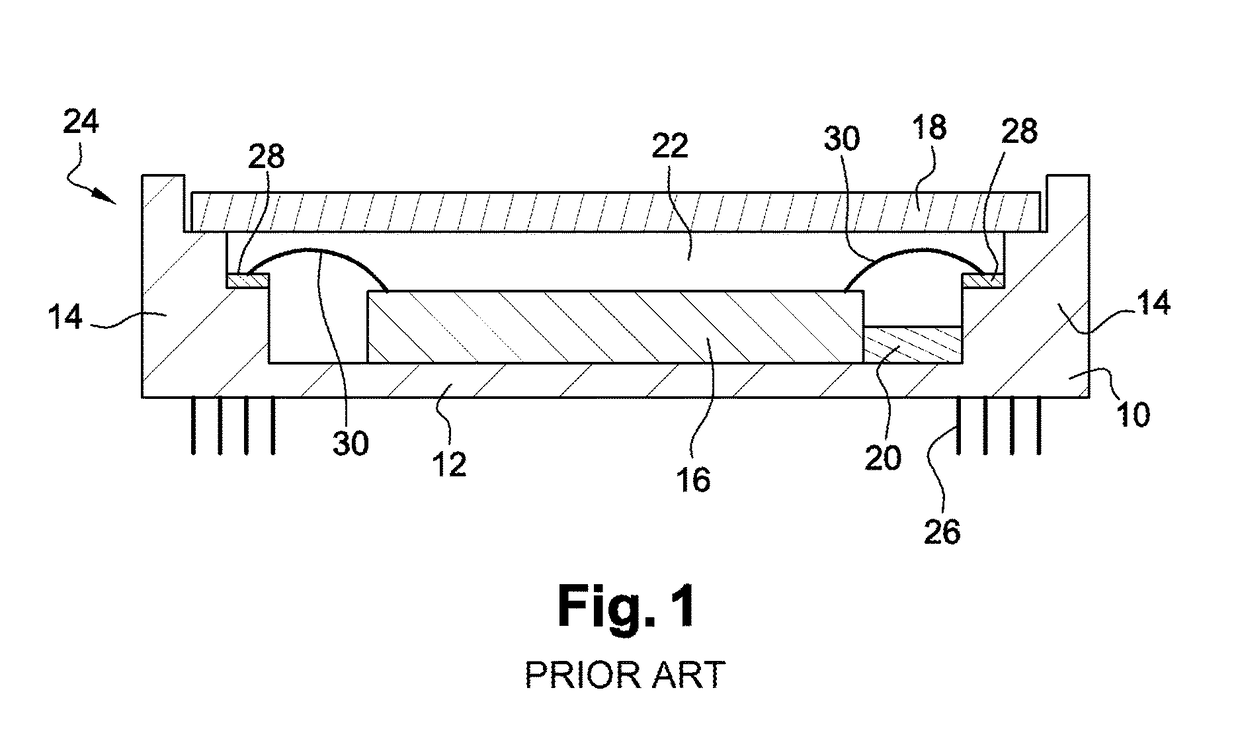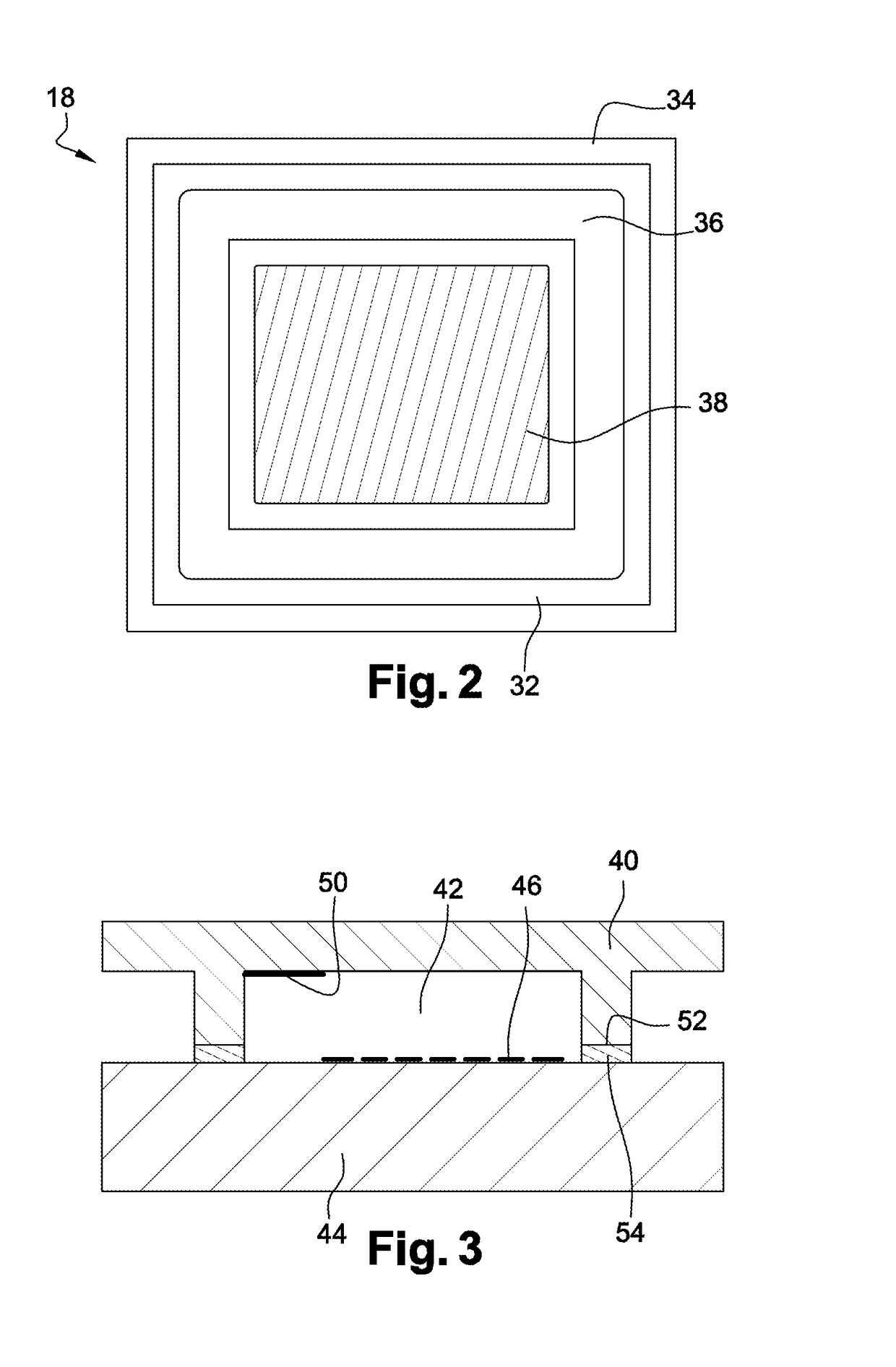Method for Manufacturing a Device Comprising a Hermetically Sealed Vacuum Housing and Getter
a vacuum housing and getter technology, applied in the direction of fluid speed measurement, device details, instruments, etc., can solve the problems of tightness, intense radiation capable of damaging the bolometer, and damage to the bolometer, so as to reduce the number of manufacturing steps, and simplify the design of the device
- Summary
- Abstract
- Description
- Claims
- Application Information
AI Technical Summary
Benefits of technology
Problems solved by technology
Method used
Image
Examples
first embodiment
A) Sealing of the Housing with a Pumping Out of the Housing Via an Exhaust Tube
[0056]According to a method of the state of the art, the hermetically sealed housings closed by a window transparent to radiations of interest, usually made of silicon or of germanium for infrared applications, are pumped out via a tube crossing a wall of the housing, called “exhaust tube”, enabling to pump from the inner space of the housing. The housing is typically made of metallic materials or associating a metal for the walls, the bottom, and the cap, and glass and / or ceramic for the electrical paths formed in the walls, thus forming a hermetically closed enclosure once the exhaust tube has been mechanically sealed. More particularly, the window is placed on the lateral walls of the housing and attached thereto by soldering. A layer of metallic solder material is deposited for this purpose on the window and / or the lateral walls of the housing, after which a thermal and / or mechanical action is exerte...
second embodiment
B) Sealing of the Housing with a Pumping Out of the Housing According to a Method of Collective Sealing of Individual Parts
[0070]Another state of the art relative to the hermetic sealing of microelectronic components, in particular, of microbolometric imaging components, provides a collective sealing which does not use exhaust tubes to obtain vacuum in the cavity of a housing. According, for example, to document FR 2874691, it is possible to collectively assemble discrete components in a vacuum oven taken to a sufficient temperature for a duration adapted to the desired vacuum level.
[0071]As in the case of housings pumped out by an exhaust tube, the vacuum cavities contain substantially no organic material (polymers, adhesives) which excessively degas, for too long a time for the implementation of the described embodiments.
[0072]The microelectronic component is particularly fixed by fluxless soldering in the housing opposite the window transparent to infrared radiation. The preferr...
PUM
| Property | Measurement | Unit |
|---|---|---|
| Temperature | aaaaa | aaaaa |
| Time | aaaaa | aaaaa |
| Thickness | aaaaa | aaaaa |
Abstract
Description
Claims
Application Information
 Login to View More
Login to View More - R&D
- Intellectual Property
- Life Sciences
- Materials
- Tech Scout
- Unparalleled Data Quality
- Higher Quality Content
- 60% Fewer Hallucinations
Browse by: Latest US Patents, China's latest patents, Technical Efficacy Thesaurus, Application Domain, Technology Topic, Popular Technical Reports.
© 2025 PatSnap. All rights reserved.Legal|Privacy policy|Modern Slavery Act Transparency Statement|Sitemap|About US| Contact US: help@patsnap.com



